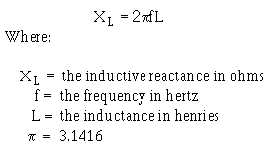1-3
You can assume, if you are going to be involved in electricity or electronics, that you will need to
have a good working knowledge of tuned circuits and how they are used in electronic and electrical
circuits.
REVIEW OF SERIES/PARALLEL A.C. CIRCUITS
First we will review the effects of frequency on a circuit which contains resistance, inductance, and
capacitance. This review recaps what you previously learned in the Inductive and Capacitive Reactance
chapter in module 2 of the NEETS.
FREQUENCY EFFECTS ON RLC CIRCUITS
Perhaps the most often used control of a radio or television set is the station or channel selector. Of
course, the volume, tone, and picture quality controls are adjusted to suit the individual's taste, but very
often they are not adjusted when the station is changed. What goes on behind this station selecting? In this
chapter, you will learn the basic principles that account for the ability of circuits to "tune" to the desired
station.
Effect of Frequency on Inductive Reactance
In an a.c. circuit, an inductor produces inductive reactance which causes the current to lag the
voltage by 90 degrees. Because the inductor "reacts" to a changing current, it is known as a reactive
component. The opposition that an inductor presents to a.c. is called inductive reactance (X
L). This
opposition is caused by the inductor "reacting" to the changing current of the a.c. source. Both the
inductance and the frequency determine the magnitude of this reactance. This relationship is stated by the
formula:
As shown in the equation, any increase in frequency, or "f," will cause a corresponding increase of
inductive reactance, or "XL." Therefore, the INDUCTIVE REACTANCE VARIES DIRECTLY WITH
THE FREQUENCY. As you can see, the higher the frequency, the greater the inductive reactance; the
lower the frequency, the less the inductive reactance for a given inductor. This relationship is illustrated in
figure 1-2. Increasing values of XL are plotted in terms of increasing frequency. Starting at the lower left
corner with zero frequency, the inductive reactance is zero. As the frequency is increased (reading to the
right), the inductive reactance is shown to increase in direct proportion.

